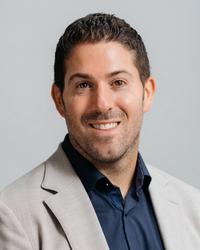Transitioning from Founder Led Sales to Your Critical First Sales Hire
A case study on what you need to know, from screening resumes to closing your candidate.

In the earliest days of company building, it’s common for Founders to personally lead Sales efforts in what’s known as “Founder Led Sales.” Early customer acquisition efforts take many twists and turns as the company searches for elusive product-market fit. Founders often need to be personally involved in triangulating the match between each customer’s pain points and the product's early capabilities.
The next phase of Sales can be a tricky one: As more customers come on board, the Founder seeks to transition Sales to a first Salesperson who will lead prospect conversations and deal cycle management.
Primary Impact partners with Founders to navigate this transition. Here’s our step by step guide to hiring your first Salesperson, presented as an (anonymized) portfolio company case study highlighting a successful process led by Jason Gelman, VP of Go-to-Market Strategy, and Ryan Monk, People & Networks Principal.
Creating the Salesperson’s profile
Any talent process should start with a clear vision of who will be a good fit for the role. We start by asking the following questions about a startup’s circumstances to shape a Sales candidate profile.
- What are the outcomes this person needs to achieve?
- How much sales expertise do you need them to walk in the door with?
- How much compatibility do you need between their previous sales motions and yours?
- How much customer / industry experience do you need them to walk in the door with?
- How much management bandwidth do you have as the CEO?
- What will success look like in this role, early and long term?
- Do you envision them as an individual contributor? Player/coach? Manager? An IC who can grow into a leadership role?
In this case, the Founder articulated a couple of key priorities that helped us define what’s needed:
- Expertise—someone who could walk in with enterprise sales best practices in hand
- Leadership skills—to help guide the overall GTM resources in place
- Command of deal cycles—so the Founder could delegate pipeline and relationships
- Credibility—to persuade specialized customers to partner with the company at an early stage
- Autonomy—the Founder wanted to be able to focus more time on other areas of the business, and ideally this person would also have the ability to grow into a player/coach and hire other new Salespeople
Leveraging these notes, we translated the profile to the following statement.
We want a First Line Sales Manager that has some management experience but has also been a top performing enterprise Account Executive recently enough that they can still roll up their sleeves and lead deal cycles.
In this case it was:
- 5+ years of enterprise sales experience (high performing IC Account Executive)
- 1-3 years of enterprise sales management experience (Sales Manager/ Director)
- SaaS or alternative relevant Sales background
- Experience working six figure deal cycles
We also know a resume can only tell you so much, especially given limited job title consistency across companies. To narrow down the resume pool, Ryan looked for:
- Promotions, ideally over several cycles
- Expanded responsibilities, from new territories to additional AE responsibilities
- Product similarities, especially around the level of complexity
Outbound, not inbound
A talent funnel is like a Sales funnel: There’s no chance you’ll find the best possible candidates if you sit back waiting to see who applies to your posting. Our team uses tools like HireEZ, Gem, or good old fashioned LinkedIn messenger to get in touch with these candidates.
For this process, Ryan built an outbound email list of 415 potential candidates, which resulted in 66 recruiter screens, 24 interviews, and a hire 93 days later. He got a 30% response rate and 5.7% interview conversion rate—which is fantastic in the world of recruiting. Ryan was able to do that by building a good list and crafting great outbound messages—like with any Sales funnel, you’re going to need follow ups.
The initial outbound note read:
Hi (First Name), I hope you are doing well. My name is Ryan and I work on the Talent team at Primary Venture Partners, a VC firm focused on early stage investments.
Getting in touch as I think your experience could be a great fit for a founding Director of Sales role with one of our portfolio companies.
[One sentence about the company]
They are currently partnering with a few fortune 500s and are looking to bring on an experienced Director of Sales that would be a founding member of their Sales function as they move toward a Series A.
Think you could be a great fit. Please feel free to book time on my calendar if interested.
A followup, three days later, read:
Did you get a chance to check out the Director of Sales role I sent you? This role could be ~$400k OTE and 1-2% stake in the business for the right candidate.
Sharing a couple blog posts I thought you might find interesting.
After one more simple nudge, this final note:
This will be the last time I contact you about the Director of Sales role, but feel free to get in touch.
Please let me know if you might know anyone that could be a match.
Key points Ryan aims for in these types of notes:
- Explain what the company does and why the Founder is uniquely qualified to do it.
- Use language that speaks to the types of candidate profiles you want—if you want someone with a lot of hustle, consider saying something like “in this Founding Sales Leader position” to show they’ll be the first revenue leader and hopefully a long-term one.
- If there are materials like blog posts or a strong website to point to, use those!
- Keep it short, ending with a clear call to action to get on the phone.
Recruiter screenings and red flags
When Ryan gets candidates on the phone for an initial screening, he shapes an agenda like the following:
- Who you are (2 minutes).
- Questions about the candidate’s current position and last two roles, with an eye on concise and factual communication (10 min).
- Questions on the candidate’s motivators, compensation, interests, and timeline—what are you missing in your current role? What’s your dream job? What’s your timeline for landing something new? Is cash most important or are you willing to opt for more equity? (5 minutes)
- Pitch the company (5 minutes).
In addition to gathering the information above, Ryan was on alert for several red flags:
- Being motivated by only high cash compensation.
- Badmouthing a job or boss.
- Jumpy job history, especially in Sales, is a huge red flag.
- Lacking intellectual curiosity and not asking questions.
- Preferring the formal structure of larger companies.
- Not sending thank you notes. (Jason: “It’s a big red flag for a customer facing sales professional if they don’t send a follow up thank you note”).
After a strong screen, Ryan follows up via email, providing additional resources like leadership LinkedIn profiles and outlining the interview process and timeline. From the first screen through the final prompt, this interview process took about five weeks, paced at one interview a week, but the most important thing is that candidates get clear, consistent communication about what to expect.
What to look for in first round interviews
After the screening calls, Ryan passed the best candidates to Jason, keeping every process the same so they can calibrate quality and consistently make good calls on how to narrow the funnel. “My aperture was wide open,” Jason explains. “Some people look great on paper but interview poorly, or vice versa. These interviews helped create a feedback loop for Ryan to determine what additional information we’d need moving forward.”
Jason had three main areas of assessment in his interviews:
- Rapport building: “How will this person look, feel, and sound in front of customers? From the moment I say, ‘Hey, it’s great to meet you,’ the interview assessment is on. It’s a red flag for Sales candidates not to engage or show interest in relationship-building. They should also be active listeners, picking up on my cues instead of following their own agenda.”
- Specific competencies: “We wanted someone able to run complex Sales cycles, demonstrate go-to-market fluency, and manage up to a CEO. In addition to digging into each candidate's sales experience and skills, I’d ask open-ended questions like “if you were the CRO of your company today, what changes would you immediately make to improve your overall sales operation?” This gives a great window into the higher level strategic thinking and ability to direct GTM resources.
- Stage fit: “I always ask, ‘Have you been in an environment with few structured resources for Sales? If so, how did you build the machine? How did you secure meetings with early prospects? How did you use the CEO and team members in deals?’ If they haven’t been in an unstructured environment, I ask ‘What resources do you have today?’ The more resources, the more unlikely they’re ready to operate at a seed stage startup.
Regardless of stage and size of company, testing for these three areas in Sales leadership is recommended.
Second round interviews
In the initial candidate profile review, the team added an additional step to test enthusiasm before getting to evaluating core Sales competencies. As Jason says, “This Founder was looking for a running partner. He wanted to find someone curious, well researched, and high energy.”
In a 30-minute one-on-one, the Founder gave a brief introduction before asking, “What would you like to learn?” The candidate drove the rest of the meeting.
Maintaining tight feedback loops was instrumental in their success. The Founder and Jason debriefed before and after every interview. They shared a similar hiring philosophy: “Hell yes or no. Is this person going to make us say, ‘I cannot believe we got them’?”
Third round interviews
After the enthusiasm test, the Founder met with candidates a second time, now covering more meat and potatoes competencies and attributes. Here are the questions he asked and what he listened for in responses.
Walk me through the size and scale of the organizations and Sales teams you've worked with in the past.
Listening for: (1) Conversant in the company’s numbers. (ARR profile, customer count, etc.) (2) Whether they have experience scaling and/or being in similar environments to this startup’s.
Who were your last company’s target customers? How is this different from how you see this startup’s target customers, and does this difference inspire a different Sales approach in these two contexts?
Listening for: Engagement with a similar context to this startup—with a limited universe of customers, in the range of 1,000-2,000 viable prospects—and/or an acknowledgment of the startup’s unique context and the need to not spray and pray that it generates.
Talk to me about how you think about deal qualification and moving opportunities through the funnel.
Listening for: (1) Heavy emphasis on discovery. (2) Mentions of frameworks (like BANT or MEDDIC). If candidates don’t mention formal Sales processes, follow up: Have they used such a framework in the past?
[If candidate has experience at an early stage company] What was your relationship with the CEO? How did your interactions/reporting look in practice?
Listening for: Trust. If the CEO can trust the AE to catch the ball, might not need as much supervision.
Walk me through an example of a time where you built a new process from 0 to 1.
Listening for: The builder mindset that’s crucial for seed-stage companies.
How do you stay organized/manage deals in your funnel?
Listening for: (1) Organizational skills. (2) Tactics like close plans, for enterprise sellers.
If we spoke with your current manager about your biggest development area, what would they say?
Listening for: A match with our needs—someone who can work on the whole pipeline, from prospecting to increasing our top to closing at the bottom.
What is your Sales superpower compared with your peer set?
Listening for: Hopefully prospecting or something else that can build more pipeline coverage.
Stand and deliver
For the final interview, top candidates were invited to present on a prompt to the team in a “stand and deliver”—a timeboxed prompt for a presentation that shows how candidates approach problems, present, and think on their feet.
For Jason, this step is a must-have in all Sales roles. “Standard interviews are constrained to direct questions and answers. Stand and delivers three-dimensionalize a candidate’s personality and approach to problem solving. They allow the company to see a candidate’s problem-solving, fluency, research, and live critical thinking.”
While extra work is required, Jason is careful not to design overly onerous assignments and, in general, believes they serve as good speed bumps to determine a candidate’s commitment. Candidates also benefit from the chance to experience potential future work while getting to know the team.
Here’s the one we gave finalists in this process:
Account Planning: Final Round Stand & Deliver (60 mins)
A core part of your role will be leading our plan of attack for key accounts. We want to establish a way to “account plan” for our very best prospects so we can coordinate a strategic, thoughtful way to successfully establish a Sales cycle.
Today we’ll have you work through two account plans using the information you’ve learned through research and our conversations during the interview process.
Account Planning: Final Round Interview
A core part of your role will be leading our plan of attack for key accounts. We want to establish a way to “account plan” for our very best prospects so we can coordinate a strategic, thoughtful way to successfully establish a sales cycle. Today we’ll have you work through an account plan using the information you’ve learned through research and our conversations during the interview process.
Prompt Part 1. Please select 4 companies that have a product or application that you think would be a strong potential fit for the Company. For each, please identify the specific use case that the Company could support and qualitatively describe our function.
Time / Content: This portion will be roughly 10 minutes. Please only prepare 1 slide for this section.
Prompt Part 2. Please choose 1 of those 4 accounts to create an account plan for.
First, please summarize how you design your Account Plan template & agenda ( 1 minute).
- Why did this company stand out as the one you’d choose to target & plan for first?
- Share a summary of where and how you think Company could plug into an existing initiative.
- How would you craft the plan of attack to land a first meeting with this account?
- Please share the specific outreach messaging you’d use as it relates to their strategy
- and / or initiative that you identified.
- What role would you have Michael (CEO) and Kevin (SDR) play in the outreach strategy?
- What would your alternative approach be if you’re first plan of attack didn’t work?
Time / Content: This portion will be roughly 45 minutes - please prepare a maximum of 10 slides for this section
Closing, feedback, references
Gathering feedback and following up with the candidate quickly is essential in maintaining momentum.
Within 15 minutes of the final candidate completing their mock, the Primary and startup’s hiring team huddled on the phone. As hiring manager, the Founder was the decision maker, but the enthusiastic “yes” was unanimous. Once they decided to extend an offer, the Founder debriefed with the candidate. Ryan, as the recruiter, also reached out to the candidate. It’s important that someone in addition to the hiring manager is maintaining rapport and chaperoning the candidate through the process. Ryan shared an offer template, asked for references, did post-offer check-ins, and walked the candidate through the final steps. Multiple team members also sent out a congratulatory note.
In addition to traditional references, Jason advocated for back-channel references as a standard best practice. As he says, “You have to frame your questions carefully with regular references, knowing that this person is likely a friend. Back-channel references are more helpful, and essential for senior roles.”
To determine compensation, they relied on benchmark data, modified to fit the startup’s specific needs. Jason suggested transparency about the startup levers: “Show them offer A and offer B, with trade offs, and ask ‘Which is better for you?’ You’ll empower people to choose based on their personal situation.”
What’s next?
As our candidate moves towards acceptance (and a big celebratory moment!), our attention shifts to crafting an onboarding plan. Ryan and Jason both keep in touch with the candidate leading up to and post onboarding, with Jason regularly offering time to assist with the onboarding plan and experience.


